In frequently language after we describe one factor as “salient” we suggest what’s most central.
In geography, a “salient” is a excellent perform in a panorama, like an iceberg breaking the ground of the ocean. The phrase “salient” moreover has affinity with “saline”: every come from the Latin phrase for salt.
Salients might be the title of an exhibit which is a retrospective of my work. The exhibit brings collectively photographs, sound and situated objects from initiatives, developed over a decade, that revolve spherical our superior interrelationships with water.
The catalyst for this trajectory in my studio observe was the Tōhoku earthquake and tsunami that struck the east coast of Japan in 2011.
I lived and labored in Tokyo from 1998 to 2006, and witnessing the images of what’s usually usually generally known as the three/11 disasteralong with the following worldwide reverberations, led to a primary shift in my world view.
It moreover catalyzed a faithful switch in my evaluation and art work manufacturing in the direction of factors surrounding water, superior interconnectivity and the strategies whereby the ocean and its tributaries kind custom, enterprise and the collective creativeness.
Provide of life, destruction
Numerous my work since Tōhoku has explored the contradiction or rigidity whereby
water acts not solely as a constructive and generative have an effect on — the provision of all life on our planet, however as well as an agent of immense and unfathomable dangerous power.
What struck me initially about images of the three/11 tsunami was that it did not look as I had anticipated. Its type regarded nothing like Katsushika Hokusai's iconic painting Beneath the Wave off Kanagawaadditionally known as The Good Wave.
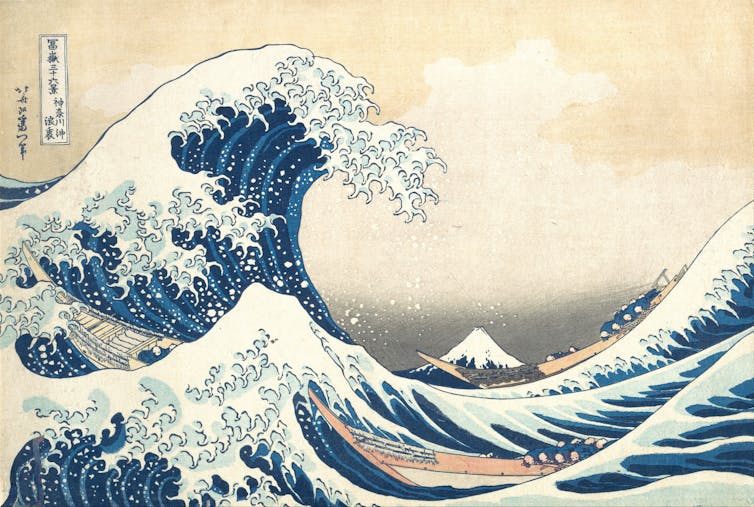
Nor did it look one thing like depictions I had seen in disaster motion pictures.
There was no blue triangular kind, no white froth on the height. Instead, the stress of the earthquake manifested in a darkish swell of water mixed with earth
that superior inland with out acceleration or deceleration.
The wave swept all through the panorama effortlessly, pulling with it crushed vehicles, uprooted bushes and buildings, along with unimaginable points dragged alongside beneath the ground.
The stylish: awe, marvel, fear
There was one factor inside the impact and aesthetics of these images that positioned them for me inside the customized of the stylish — a time interval from Euro-western philosophical and artistic discourse that has been evolving and morphing since at least the seventeenth century.
The etymological roots of “stylish” come from the Latin stylish which implies “extreme up” or lofty. Throughout the western historic previous of seen art work, the stylish is most frequently associated to the work of Romantic-era painters like Joseph Turner and Caspar Friedrich. Western curators usually moreover embrace Hokusai when exploring the stylish.
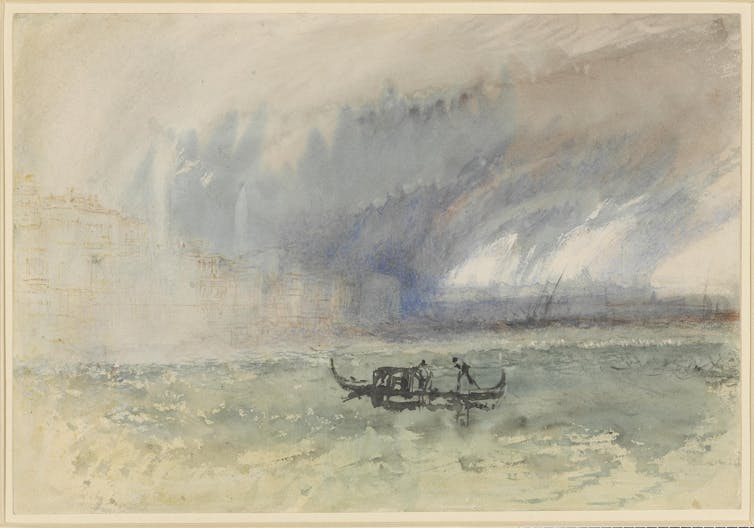
(Trustees of the British Museum), CC BY-NC-SA
These artists tried to articulate the visceral sense of awe and marvel — barely tinged with fear — that one experiences when gazing upon the vastness of a starry sky, or a physique of water stretching from horizon to horizon.
The stylish components in the direction of positive modes of aesthetic, sensory and existential experience that exceed human thought and understanding.
Boundless networks of co-existence
Fashionable idea throughout the stylish extends the time interval to include machines and know-how, large networks of worldwide communications and the net.
Be taught further:
Gods inside the machine? The rise of artificial intelligence may finish in new religions
On this sense, there’s moreover one factor stylish regarding the strategies whereby the medium of water interconnects all points: it flows all through borders and blurs delineations between native/worldwide, micro/macro and human/non-human.
I am considerably invested inside the work of updated philosophers just like Jane Bennett and Timothy Morton whose work challenges us to rethink the place of individuals inside these boundless networks of coexistence.
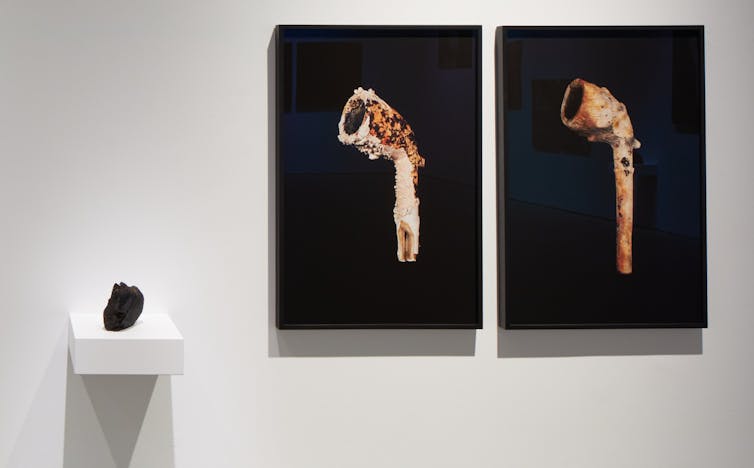
(Chris Myhr), Creator provided
Pipes, glass vessels, algae, contaminants
The initiatives in Salients perform topic materials collected from 4 predominant Canadian water packages:
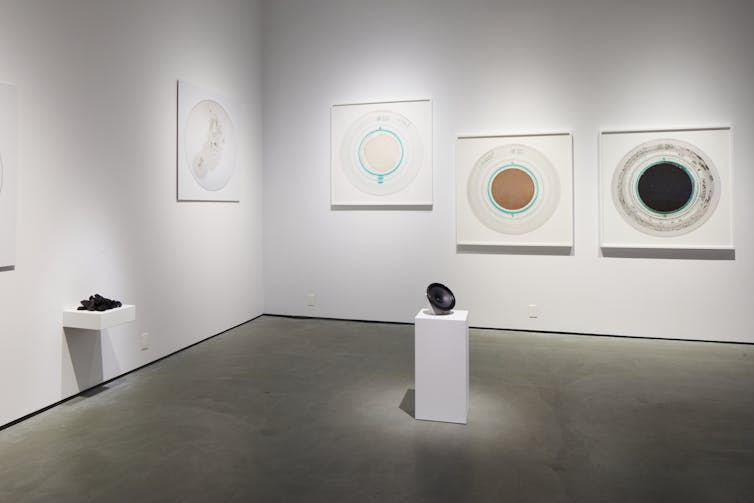
(Chris Myhr), Creator provided
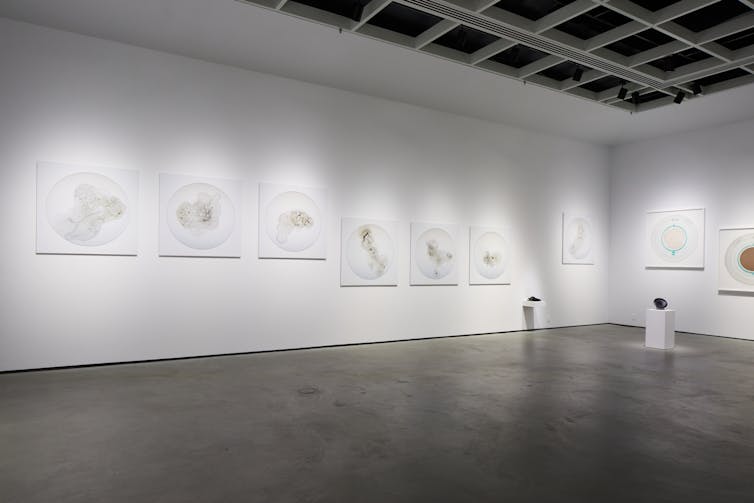
(Chris Myhr), Creator provided
Irreducibility of matter
There are not any direct representations of water inside the Salients exhibition.
Returning to the considered “saline,” what’s seen inside the exhibition is simply not rather a lot the “decision” nonetheless the “salt” — stubborn matter that has refused to dissolve all through the water system from which it was recovered.
Euro-western contemplating tends to delineate between matter and energy. However — like energy — matter cannot be created nor destroyed. Instead, it strikes and shifts from one type to a special; from one location to a special; from one physique to a special.
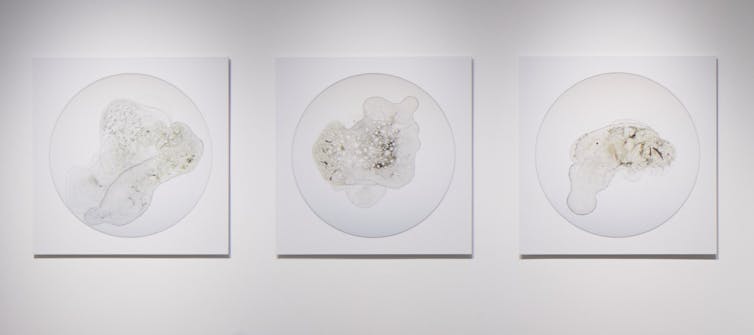
(Chris Myhr), Creator provided
Although Salients images have been rendered by way of superior digital imaging utilized sciences, they ruminate not on ephemeral points like data or pixels nonetheless pretty the sheer irreducibility of matter.
Our supplies legacies will certainly outlive our digital footprints.
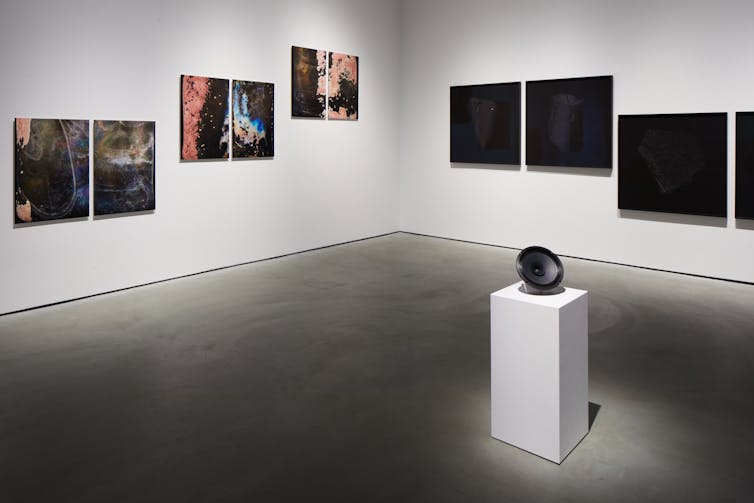
(Chris Myhr), Creator provided
Elegant environmental challenges
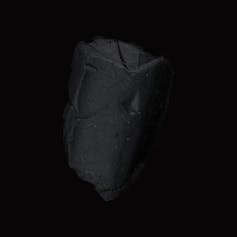
(Chris Myhr), Creator provided
Bitumen falling from the sky in Fort McMurray, tar globs embedded inside the sand alongside Lake Erie and microbial algae blooms seen from space gesture in the direction of refined and messy environmental challenges that will not dissolve simply inside normal frameworks of Euro-Western contemplating.
There isn’t a such factor as a singular set off to these outcomes, and there might be no silver bullet decision to these points.
It ought to take fully completely different frameworks of contemplating: ingenious, inclusive and interdisciplinary contemplating to deal with these factors which — of their vertiginous complexity and sheer magnitude — most really border on the stylish.
‘Salients’ runs until March 24 on the McMaster Museum of Art work in Hamilton, Ont.
